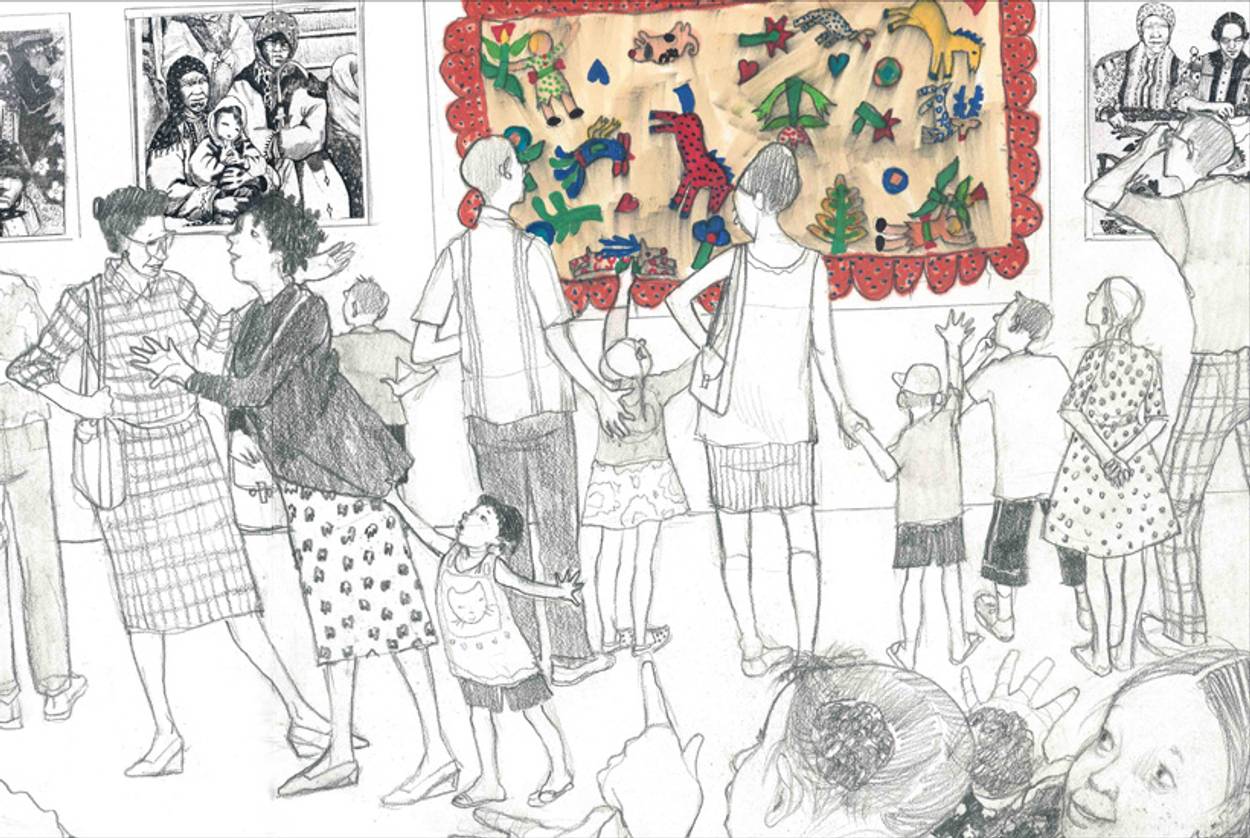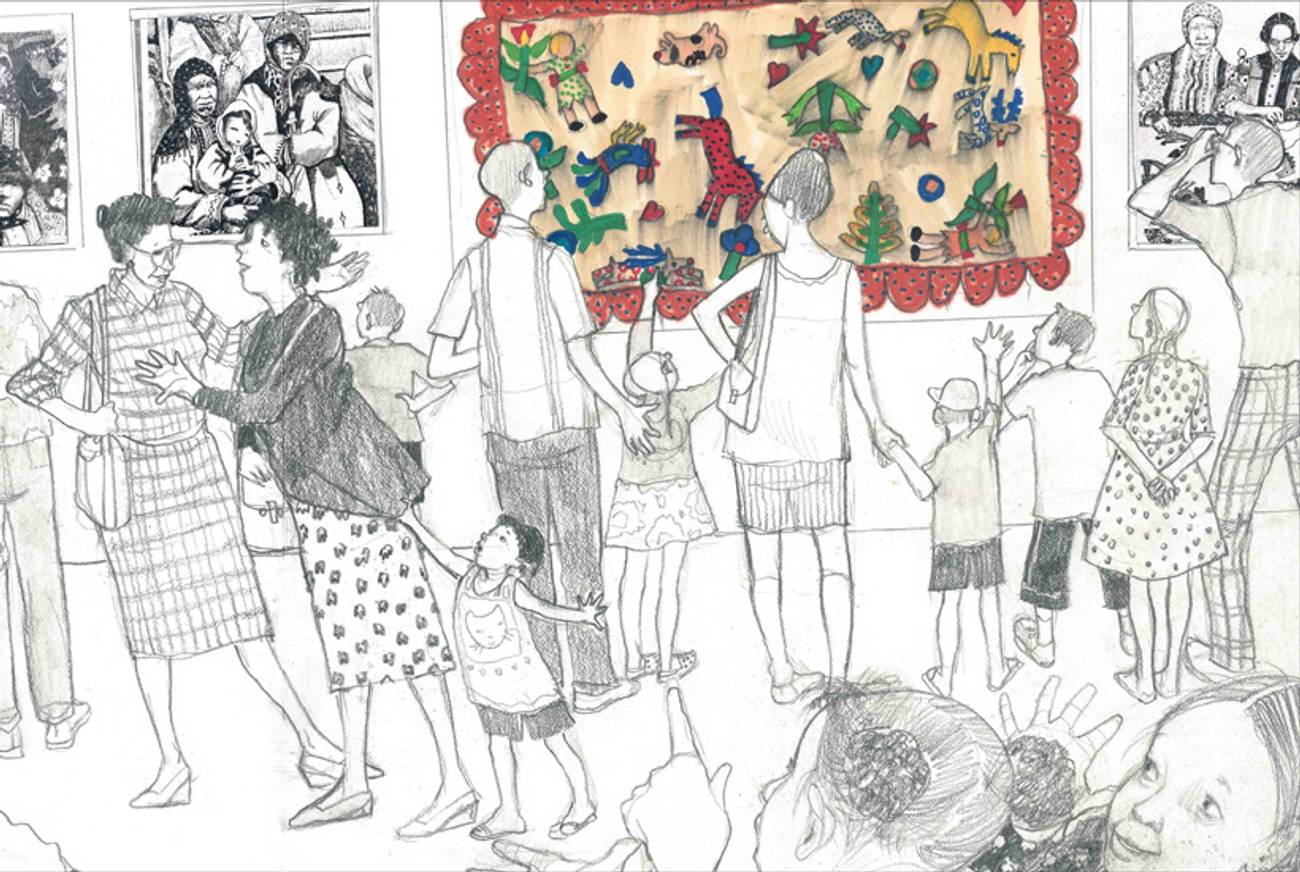Patricia Polacco’s ‘The Keeping Quilt’ Beguiles a New Generation of Kids
As her classic children’s book marks its 25th anniversary, the author tells more immigrant tales in a new prequel, ‘The Blessing Cup’




I burst into tears while interviewing Patricia Polacco.
I couldn’t help it. Her books have meant so much to me. Shortly after my dad died in 2004, I started reading Mrs. Katz and Tush to 3-year-old Josie. In it, an elderly Jewish lady and a young black boy come together to care for Tush, a tailless cat—like so many of Polacco’s children’s books, it’s a multicultural, intergenerational story full of both sadness and joy. As I read it, I thought about my father, who I missed so much, and about the way love and loss go hand in hand. Before long, I had two children demanding that I read Mrs. Katz and Tush to them at bedtime. They loved the story and the kitty, and they also loved seeing me struggle to make it through the ending without getting weepy. Sure, they got a sick thrill from seeing me lose my composure over and over again, but they also understood that the story is about the power of human connection and love being stronger than death.
I also cried (I’m a crier, deal with it) when I read Thank You, Mr. Falkerto Maxine. Like many of Polacco’s books, it’s autobiographical, about the wonderful teacher who figured out young Patricia was dyslexic, helped her learn to read, and proved to her that she wasn’t dumb. Maxie has had her own challenges with school, and I’m so grateful that my quirky kid has had educators like Mr. Falker in her life. Maxie, too, loves this book beyond all measure. Even though it’s been years since I last read it to her, when I told her I was interviewing Polacco, she gasped, “Oh! Tell her how much I love Thank You, Mr. Falker!”
I started crying when I tried to tell Polacco how much solace I’ve found in her books. (She was patient while I regained some measure of self-control.) When I finally stopped sniveling, I asked her why she doesn’t shy away from such heavy issues.
“I don’t know if my work is a concerted effort to make kids sad!” she told me. “But life and death go hand in hand. It’s our condition as human beings. When I was growing up, we never had much money, my parents were divorced young, but I was always surrounded by loving individuals. They couldn’t give us riches, but they gave us their stories, their hearts, and their time. My stories are fundamentally about the love of family.”
Indeed. Some of Polacco’s books are based on her own life, some are retellings of folktales, and some are pure imaginative fiction, but many are about the triumph of an underdog and the power of love to defeat prejudice. And there are so many to choose from! Polacco has written and illustrated more than 50 books, all in her characteristic visually sophisticated, uncuddly, uncute style.
This has been a banner year for her, with the release of an updated, 25th-anniversary edition of the much-loved The Keeping Quilt and a new prequel, The Blessing Cup, that adds detail and resonance to the story of Polacco’s great-grandmother Anna’s immigration to America. In the new book, little Anna’s family is expelled from their shtetl near Tver in tzarist Russia. Soldiers come to burn the shul, and the family flees with only a few possessions, among them a beautiful china tea set. You’ll have to read the book—to kids or to yourself—to find out why only one teacup makes it to Ellis Island, what happens to the rest of the set, and how the one surviving cup serves successive generations of Anna’s family.
The babushka Anna wears in The Blessing Cup appears in both editions (old and new) of The Keeping Quilt—it’s transformed into the border of the quilt Anna’s mother makes with the neighborhood ladies. (In these books, significant material objects like the quilt, the babushka, and the cup are rendered in brilliant, electric color, while the people are realistically drawn in soft black pencil.) The quilt serves as the chuppah at Anna’s wedding, then at her daughter Carle’s, then at her granddaughter Mary Ellen’s, and then at Patricia’s. At each wedding, there’s more evidence of acculturation: men and women dancing together, non-Jews as guests. The quilt presides over the weddings, wraps each new baby in the family, and warms Anna’s legs when she gets old. Polacco writes in The Keeping Quilt:
The quilt welcomed me, Patricia, into the world … and it was the tablecloth for my first birthday party.
At night, I would trace my fingers around the edges of teach animal on the quilt before I went to sleep. I told my mother stories about the animals on the quilt. She told me whose sleeve had made the horse, whose apron had made the chicken, whose dress had made the flowers, and whose babushka went around the edge of the quilt.
In the newly updated, revised version, we learn what’s happened to the quilt in the last two and half decades: It was the chuppah at Polacco’s children’s weddings—one straight and one gay. It went with Polacco to school visits around the country. It got increasingly worn. As a surprise, her children took digital photos of the quilt and emailed them to Polacco’s sister-in-law and her quilting guild. The quilters replicated the original, using vintage fabrics when they could, removing one heart patch from the original (“we think of it as the pulse of the original quilt,” Polacco told me) and sewing it into the new version. Polacco’s children presented it to her for her birthday, and she donated the original to the Mazza Museum, an Ohio institution that celebrates children’s book artwork, where it’s now on display.
The Keeping Quilt is far from Polacco’s only Jewish-themed book. The Trees of the Dancing Goats, Tikvah Means Hope, Someone for Mr. Sussman, Chicken Sunday, and more have dealt with Polacco’s mother’s background. But this winter she’ll be publishing her first book about her father’s Catholic family. “They were Shanty Irish, and it’s their story of immigration to the United States,” she told me. “They were lacemakers, and it’s about how Fiona’s lace survived the Great Chicago Fire.”
Polacco’s books have dealt honestly with racism, anti-Semitism, and bullying, but it wasn’t until she wrote about a happy multicultural family headed by two moms that she experienced the joys of book-banning. In Our Mothers’ House was removed from elementary-school library shelves in Davis County, Utah, after a parent protested that it “normalizes a lifestyle that we don’t agree with.” Eventually another local mother, Tina Weber, joined forces with the ACLU to sue the school district; Weber said, “Our job as parents is to make sure we teach our children about our values. We can do that without imposing our personal views on the rest of the school community.” This past January, the book was returned to circulation. (However, parents can still demand that the library not allow their own children to take out the book. Life, like Polacco’s books, is a mix of victory and loss.)
The new edition of The Keeping Quilt has a picture of Polacco’s daughter Traci and her wife under the chuppah-quilt. Tears came to my eyes (sense a theme here?) when I saw it. I thought of my brother and his husband’s wedding, under a chuppah designed by their dear friend Ellen, sewed by my Aunt Gilda (an incredible quilter), decorated with panels contributed by friends and family. How ironic that symbols of LGBT commitment like a chuppah, and portrayals of unexceptional Midwestern family life like In Our Mothers’ House, drive haters just as crazy as thoughts of bathhouse orgies. (Read some of the one-star reviews of In My Mother’s House on Amazon if you think I’m exaggerating.)
I asked Polacco why she’s such a strong advocate for LGBT families. She replied, “Well, right now, when Mr. Putin is hunting down gays the way they did Jews in the pogroms—it’s almost that bad!—we need to be sympathetic toward people who are being persecuted for who they are. I don’t believe being gay is something you can change, no more than you can change the color of your hair or your eyes. Well, I dye my hair so maybe that’s not the best example. But your eyes! My daughter’s wedding—she’s now separated, but that’s reality, too—when I put that in the book, people said, ‘Oh, you might be taking a chance telling this!’ But her wedding was just as real as her brother’s.”
Realness matters. The few Polacco books I’ve had issues with were ones that felt to me just a bit too tidy or inauthentic. (Mrs. Katz and Tush gets some details of Jewish ritual observance wrong, but it’s so emotionally right, I don’t care.) Most of the time, Polacco walks the realness-emotion line gorgeously. She said, “I used to say to my bubbe, ‘Bubbe, is this story true?’ And she’d say, ‘Of course it’s true! But it may not have happened.’ What my bubbe was saying is profound: All stories are true. The truth is the journey you take through it—did it make you laugh, cry, seek and want justice? Then it’s true.”
***
Like this article? Sign up for our Daily Digest to get Tablet Magazine’s new content in your inbox each morning.
Marjorie Ingall is a columnist for Tablet Magazine, and author of Mamaleh Knows Best: What Jewish Mothers Do to Raise Successful, Creative, Empathetic, Independent Children.
Marjorie Ingall is a former columnist for Tablet, the author of Mamaleh Knows Best, and a frequent contributor to the New York Times Book Review.